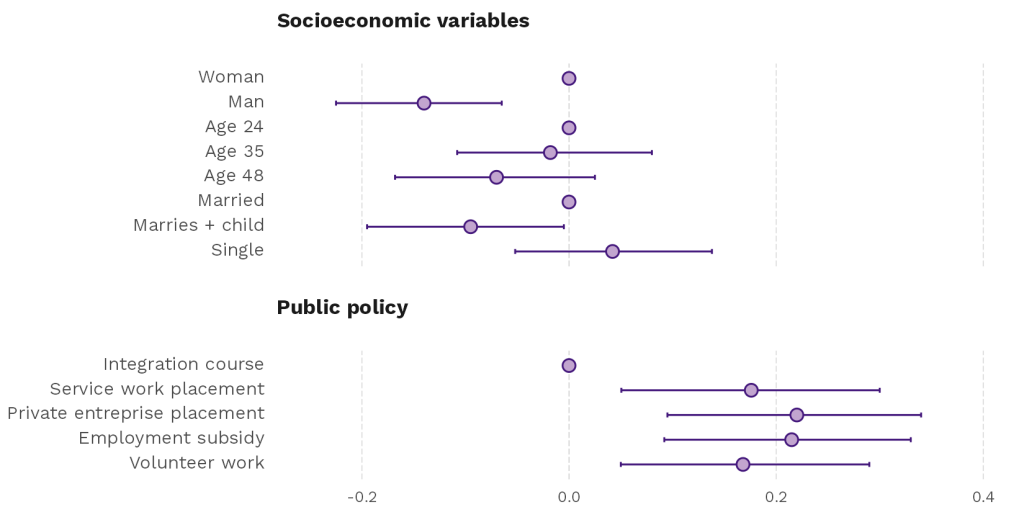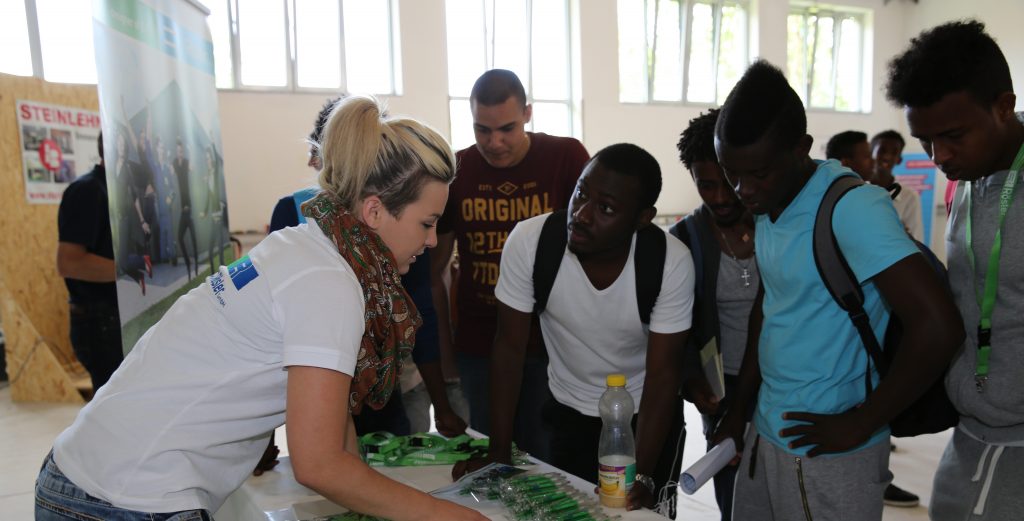Introduction
Movements of refugees have been increasing for decades now. The priority for public administrations in Western societies is to ensure that refugees achieve economic integration, which will allow them to learn the country’s language and customs, free themselves from welfare payments and contribute to society. Particularly striking is the difference between the rates of labour-market participation of male (50%) and female (40%) refugees during the ten years following their immigration. The question raised here is whether these differences are due to employer discrimination against female job seekers, or whether there are other factors preventing their integration.
The research process
Studying discrimination is difficult because employers often give socially desirable responses. To get around this problem, we experimented by using an online survey in which a sketch (fictional description of a situation) was presented to respondents. The sketch gave a summary of the life of a refugee whose characteristics (gender, civil status, age, etc.) varied in random fashion. This meant that employers were less likely to notice that we were studying discrimination, and hence responded more sincerely. Employers were shown several sketches presenting people with very different profiles and were invited to indicate the likelihood that they would interview any of the candidates for a job requiring few qualifications. We conducted this study of discrimination in Austria, Germany, and Sweden, since these countries were most affected by influxes of refugees from Syria, Iraq and Afghanistan during the “refugee crisis” (2011- 2017).
Results
We found that employers favour female refugees over their male counterparts, to a high degree of statistical significance (as shown in Figure 1, where men were assessed less favourably than women by about 0.15 points on a scale of 1-10). Our explanation is that men are discriminated against because of negative stereotypes with which they are associated in the media (criminality, aggressiveness, drug trafficking). We also found that employers discriminate against people with children (Figure 1). The question is to ascertain whether this result hides differences between the sexes. Further analyses show that, unlike men, women face more discrimination if they have children.
Figure 1 | Effects of fictional CV variables on the probability of obtaining a job interview

Figure: Alix d’Agostino, DeFacto
Conclusion and implications
Since employers discriminate against male candidates, public administration should make employers aware of stereotypes regarding men from the Middle East and/or Muslim countries. The same goes for refugee mothers. Psychologists suggest strategies to eliminate these biases involving an instruction to allow employers to consider refugees’ point of view and develop empathy towards them. Mentoring programmes in which a professional introduces a refugee to his or her working network can also be useful.
Moreover, public administration can help refugees by proposing additional integration measures (see Figure 1). Fossati and Liechti (2020) found that employers are more likely to hire refugees who, in addition to a compulsory integration course, have taken part in other activities such as a work placement or volunteer work. Unfortunately, this finding applies only to employers who had a positive attitude towards immigrants before the study. This means that integration policies have no effect on employers who just do not want to work with refugees.
In conclusion, our findings show that the low employment rates of female refugees who are not mothers cannot be explained by employer discrimination. Rather, low rates probably stem from factors such as traditional gender roles, refugees’ lack of education and/or work experience. Clearly, a set of diversified measures is necessary to tackle the economic integration of different groups of refugees.
Note: This article was published as part of IDHEAP Policy Brief No. 7.
References:
Fossati, F., Knotz, C., Liechti, F. and I. Otmani (2022). The Gender Employment Gap among Refugees and the Role of Employer Discrimination: Experimental Evidence from the German, Swedish and Austrian Labor Markets. International Migration review.
Fossati, F. and Liechti, F. (2020). Integrating refugees through public policy: A comparative survey experiment on hiring preferences. Journal of European Social Policy, 30(5) 601-615.
image: flickr.com






